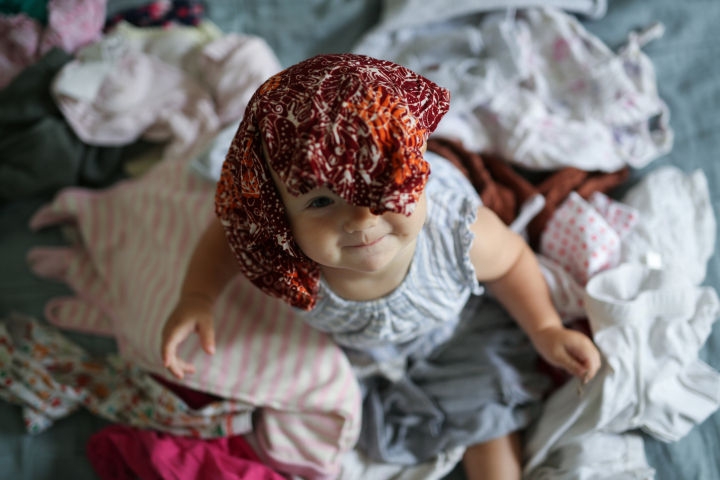Baby clothes - they're super cute, but sometimes it feels like your baby outgrows them faster than they actually wear them! Here are our top tips for making sure you get what you need to keep baby clothed and comfy at all times.
Function over fashion
Baby clothes aren't meant to last forever. Your little one will be not-so-little before you know it, so you might only get a few months - or weeks - out of each outfit. Lots of parents love dressing their little one up, but don't forget comfort!
Look for breathable fabrics, preferably cotton. Soft is best. Try to avoid synthetics as your baby's skin is very sensitive. Resist the temptation of cute little beads and bows – anything small and removable could be a choking hazard. Be sure to check that your little one can stretch their legs and move comfortably, and avoid clothing being too loose, or too tight. Tummy bands can be uncomfortable on brand-new babies who are still getting used to the sensation of clothes on their skin.
You can get away with dressing your baby one size too big for a little while. Baby clothing sizes start at 00000 (usually for premature or very small babies), but most newborns begin at size 0000. You can't predict the exact size your baby will be, but if you have a few outfits at each size, you'll be covered no matter what - and your baby will definitely get use from the bigger sizes as they grow, so they won't go to waste.
Your baby's clothes don't need to be designer (unless you really want them to be!) – they usually end up covered in spit-up, wee, or poo. You might like to have 1-2 'going out' outfits for events like family meet-ups or photos. Many parents choose to save nicer clothes for when growth slows a little once the little ones are toddlers.
Finally, think about the the ease of actually dressing your baby. Press-studs and zips are your friend! Buttons or anything fiddly can be difficult with a squirmy baby on your hands. Also consider loose neckline choices, as your baby won’t enjoy having anything tight pulled over their head.
Borrowed baby clothes
Most parents have a stockpile of now-too-small clothes. You could also chat to your family, friends, or other parenting networks to borrow, buy or swap baby clothes. Check used clothes for damage, and wash before wear using a sensitive detergent to protect your little one's skin.
Newborn clothes checklist
- Day time onesies x 5
- Sleeptime onesies x 2
- Singlets x 5
- Swaddle wraps x 2
- Jacket or cardigan x 2
- Socks/booties x 6
- Warm hat(s)
You won't need baby pants for a while, as waistbands can be bothersome with healing umbilical cord stumps. Onesies are an excellent way to cover legs for warmth or sun protection while allowing your little one's torso and nappy area to breathe.
Safe sleepwear
When dressing your little one for sleep, be mindful of the temperature. Keep your baby warm enough with a onesie, but not in a room so warm that they overheat. Never put a beanie on your child for sleeping, as it can slip off and become a hazard in the cot. Always lay your baby on their back to sleep.
Re-use your baby clothes
If you have storage space, hang on to your outgrown clothes – especially if you plan on growing your family! If not, you could pass these down to other new parents and continue the hand-me-down cycle. When your little one is older, you can buy more 'fun' outfits which will last longer. Always consider your child's comfort and safety first and foremost.
Ready to buy some baby clothes? Check out our range of baby clothes here, or head in store to shop.



